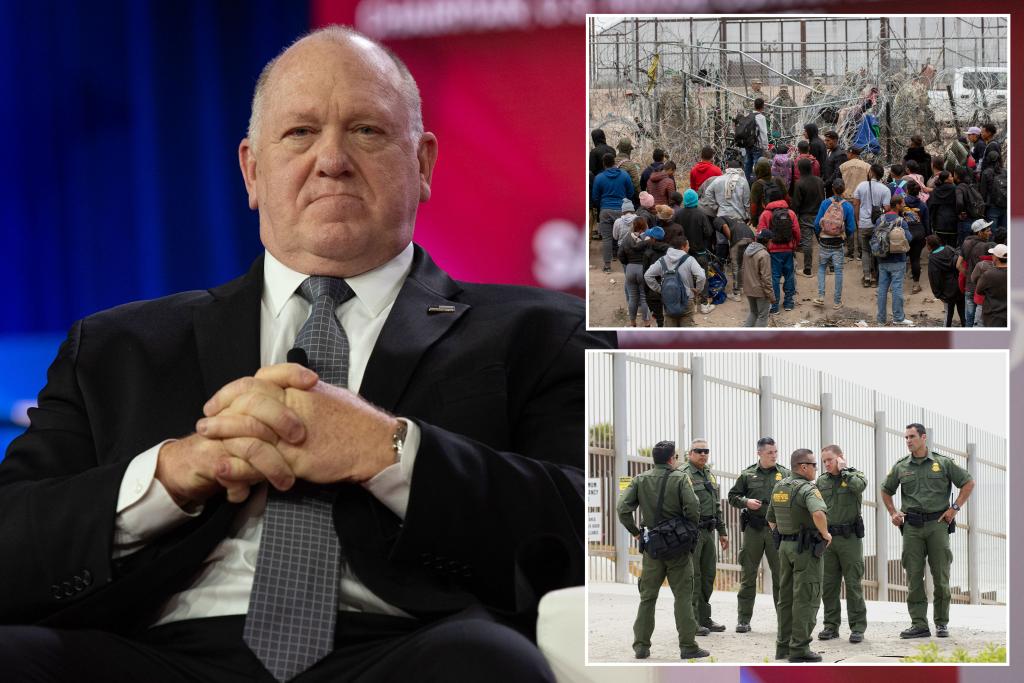Tom Homan, appointed by President-elect Donald Trump as his “border czar,” has outlined a comprehensive and ambitious plan to address illegal immigration, centered around the construction of “family facilities” and a massive deportation operation. These facilities, envisioned as “soft-sided” tent structures, would house tens of thousands of migrant families awaiting deportation. Homan emphasizes a commitment to humane treatment, asserting that families with US-born children will have the choice to remain together during deportation or be separated. This focus on humane treatment aims to maintain public trust and avoid the criticism that plagued previous administrations’ immigration policies. Homan’s plan signals a significant departure from the Biden administration’s approach, promising a more stringent enforcement of immigration laws.
The scale of the proposed deportation operation is unprecedented, projected to be larger than President Eisenhower’s 1954 expulsion of 1.1 million Mexican laborers. Homan, a former ICE official, estimates a requirement of 100,000 detention beds and a staggering $86 billion in funding from Congress to execute this plan. This substantial financial commitment underscores the magnitude of the undertaking and the prioritization of border security in the upcoming Trump administration. While acknowledging the potentially disruptive nature of such a large-scale operation, Homan insists that it will be targeted and focused on individuals with criminal records, rather than indiscriminate sweeps through neighborhoods. This targeted approach seeks to address public concerns about potential overreach and ensure that the operation is perceived as just and necessary.
Beyond deportations, Homan’s plan also addresses the pressing issue of missing migrant children. He intends to launch a separate initiative to locate over 300,000 migrant children who have disappeared after crossing the border. This concern, frequently raised by Trump during his campaign, highlights the vulnerabilities of unaccompanied minors to exploitation, including forced labor and sex trafficking. Homan’s plan recognizes the gravity of this issue and aims to ensure the safety and well-being of these vulnerable children. The search for these missing children represents a significant humanitarian component of the overall immigration strategy.
The impending deportations, as envisioned by Homan, will target individuals who knowingly entered the country illegally and subsequently had children, placing their families in a precarious legal situation. This approach emphasizes personal responsibility and aims to deter future illegal immigration by demonstrating the consequences of such actions. It’s a clear departure from policies that prioritize family unity over strict adherence to immigration laws. This emphasis on accountability is a central tenet of Homan’s approach and reflects the Trump administration’s commitment to enforcing existing immigration laws.
Homan’s plan reflects a comprehensive approach to border security and immigration enforcement, emphasizing multiple facets of the issue. The plan is not just about deportations, but also about addressing the humanitarian crisis of missing migrant children and deterring future illegal immigration by highlighting the consequences of unlawful entry. This multifaceted strategy aims to address both the immediate challenges at the border and the long-term goals of securing the nation’s borders and maintaining a functional immigration system. Furthermore, the plan acknowledges the need to balance enforcement with humane considerations, particularly in cases involving families with US-born children.
Trump’s broader immigration agenda extends beyond Homan’s specific plan, encompassing several other executive actions aimed at reversing current policies. These actions include ending the “humanitarian parole” program that admits up to 30,000 migrants monthly from designated countries, completing the construction of the southern border wall, challenging birthright citizenship, and reinstating the “Remain in Mexico” policy. These combined measures signal a significant shift in immigration policy, prioritizing border security and stricter enforcement of existing laws. The Trump administration’s overarching goal is to create a more robust and controlled immigration system, deterring illegal entry and prioritizing legal pathways to immigration.

